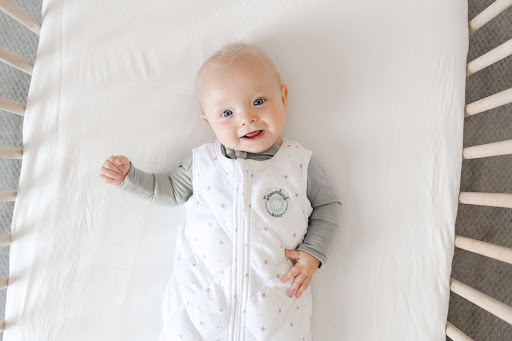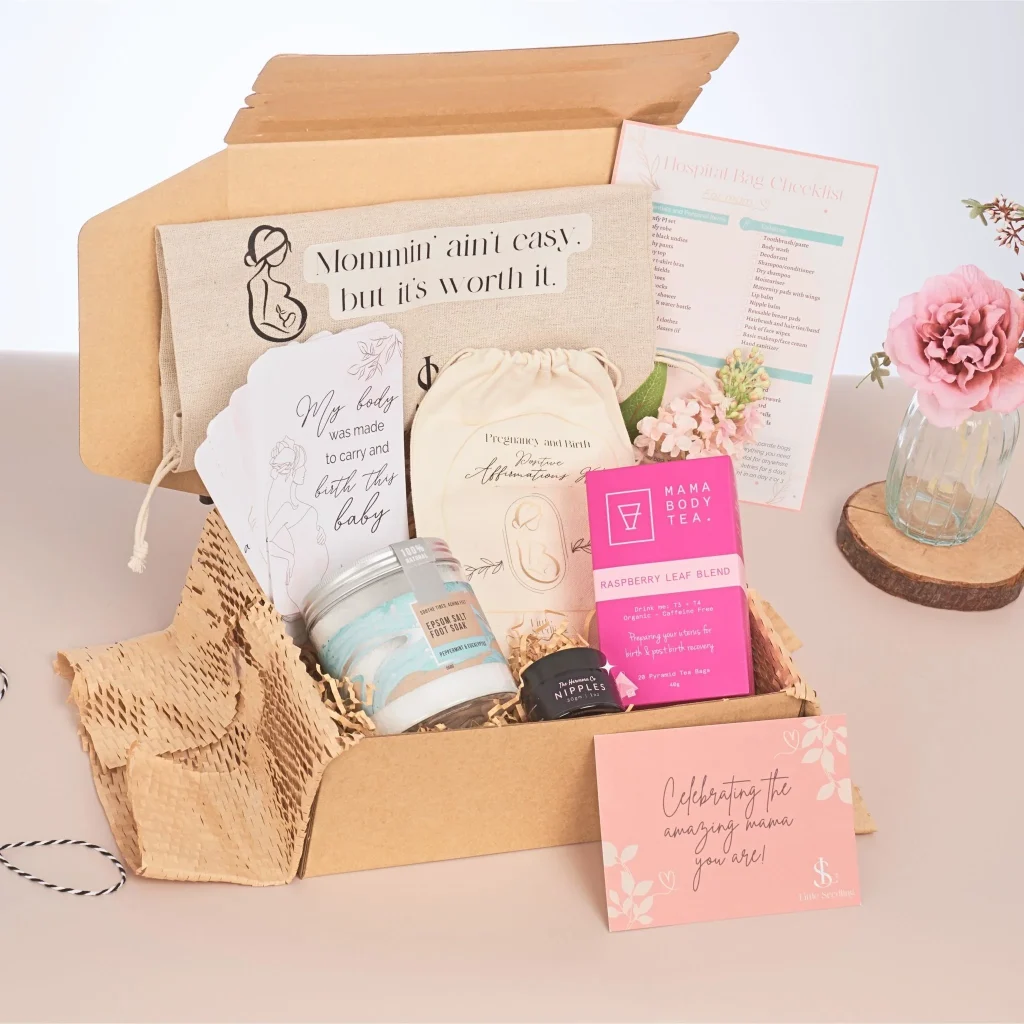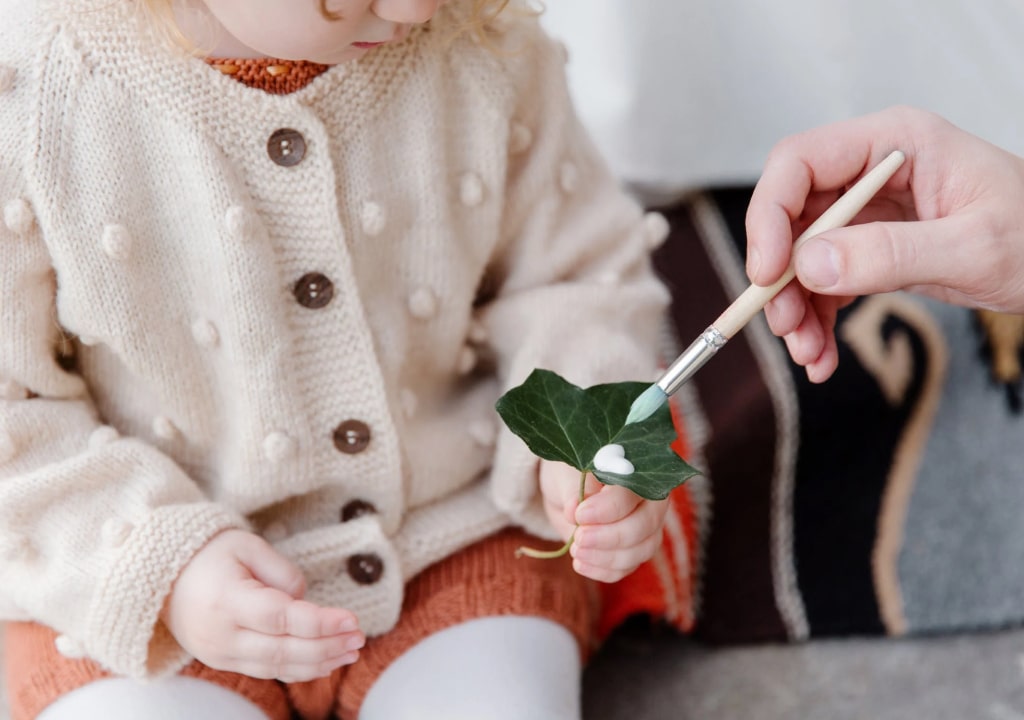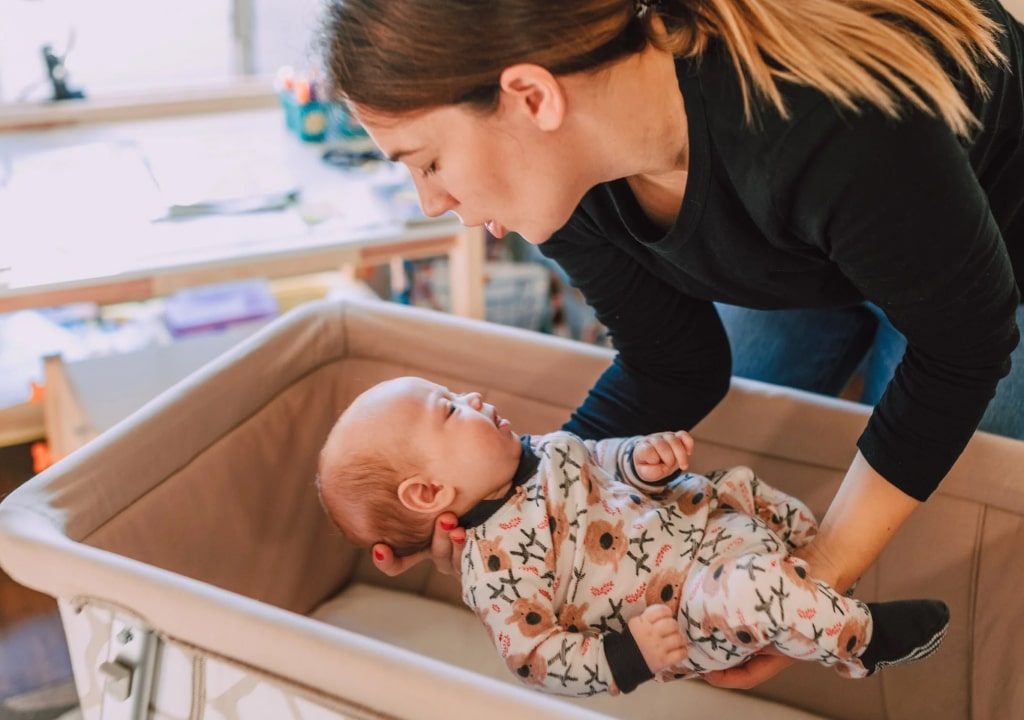Dressing your baby for sleep without a sleep sack can be done safely and comfortably with a few simple adjustments. Proper sleepwear ensures that your baby is warm enough without the risk of overheating, while also adhering to safe sleep guidelines. Here’s a comprehensive guide to dressing your baby for sleep without using a sleep sack.
Layering for Comfort and Temperature Regulation
- Base Layer: Start with a soft, breathable onesie made of cotton or a similar fabric. For cooler nights, choose a long-sleeved onesie, while a short-sleeved one may be sufficient for warmer climates.
- Additional Layers: Depending on the room temperature, you can add one or two layers of clothing. For example, a pair of footed pajamas can provide extra warmth. The key is to dress your baby in layers that can be easily added or removed to ensure they remain comfortable.
Choosing the Right Fabric

- Breathable Materials: Opt for natural, breathable fabrics like cotton, bamboo, or merino wool, which help regulate body temperature and prevent overheating.
- Appropriate Weight: Select fabrics of appropriate weight for the season. Lightweight cotton is ideal for summer, while thicker cotton knits or fleece can provide warmth in colder weather.
Room Temperature Considerations
- Optimal Room Temperature: Keep the baby's room at a comfortable temperature between 68-72°F (20-22°C). Use a room thermometer to monitor the temperature.
- Additional Climate Control: Use a fan or air conditioning to cool the room in the summer and a safe heater or extra layers during winter. Always ensure that the air circulation doesn’t blow directly onto the baby.
Safe Sleep Guidelines
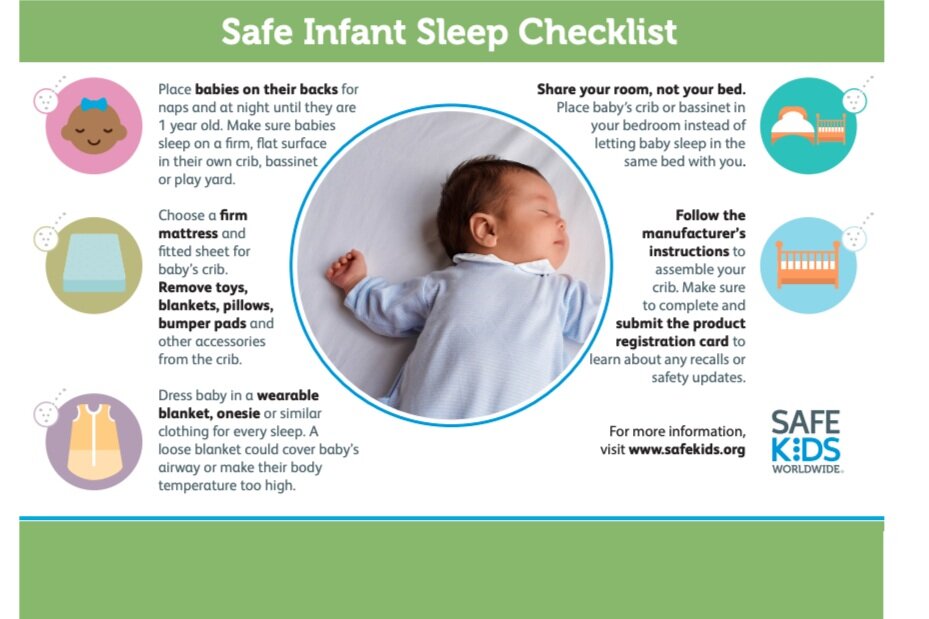
Safe Sleep Guidelines, CREDIT: safekids.org
- Avoid Loose Blankets: Loose blankets pose a suffocation risk and should not be used in the crib. Instead, rely on fitted crib sheets and properly dressed sleepwear.
- Appropriate Layering: A general rule of thumb is to dress your baby in one more layer than you would wear to bed. Always check for signs of overheating, such as sweating, damp hair, or flushed cheeks, and adjust layers accordingly.
Swaddling as an Alternative
- Swaddling Basics: For younger babies (usually up to 2-3 months old), swaddling can provide a snug, comforting feel. Use a lightweight, breathable swaddle blanket and ensure that the swaddle is secure but not too tight.
- Swaddling Safety: Ensure the baby’s hips have room to move, and the swaddle doesn’t cover the baby’s face. Once the baby shows signs of rolling over, discontinue swaddling to prevent suffocation risks.
Alternative Sleepwear Options
- Footed Pajamas: These provide warmth and eliminate the need for socks or booties, which can sometimes fall off during the night.
- Two-Piece Pajamas: For older babies or toddlers, a two-piece pajama set with a comfortable waistband can be a suitable option, ensuring they cover the tummy and back.
- Wearable Blankets and Sleep Suits: While not traditional sleep sacks, wearable blankets or sleep suits (like fleece pajamas designed to act as a blanket) can be used to provide warmth without the risks associated with loose bedding.
Monitoring and Adjustments
- Regular Checks: Periodically check on your baby during the night to ensure they are not too hot or cold. Feel their chest or the back of their neck to gauge their body temperature.
- Adjust as Needed: Be prepared to add or remove layers based on your baby’s comfort and safety needs.
Alternatives to Sleep Sacks for Dressing a Baby for Sleep
While sleep sacks are popular for keeping babies warm and secure during sleep, there are several other alternatives that can be just as effective. Here are some great options:
1. Footed Pajamas
- Description: Footed pajamas, also known as sleepers, are one-piece outfits that cover the baby from neck to toes. They often have snaps or zippers for easy diaper changes.
- Benefits: They provide full-body coverage, keeping your baby warm without the need for additional blankets. Different materials ensure proper warmth for various seasons.
2. Swaddle Blankets
- Description: Swaddle blankets are specialized wraps that snugly encase a baby, mimicking the comfort of the womb. They are typically used for newborns up to 2-3 months old.
- Benefits: Swaddling can help reduce the Moro reflex, preventing the baby from waking up due to their own startle movements. It also provides a sense of security.
3. Wearable Blankets (Sleep Suits)
- Description: These are garments designed to act like a blanket, without being loose. They often look like oversized pajamas and may be made from fleece or other warm materials.
- Benefits: Wearable blankets keep the baby warm without the risks associated with loose bedding. They come in various thicknesses to suit different temperatures.
4. Two-Piece Pajama Sets
- Description: For older babies and toddlers, two-piece pajama sets consist of a top and pants. They are often made from cozy materials and provide good coverage.
- Benefits: Two-piece sets are versatile and can be layered for added warmth. The pants usually come with elastic waistbands for a comfortable fit.
5. Baby Gowns
- Description: Baby gowns are loose-fitting, long-sleeve outfits with an elastic or drawstring bottom. They make diaper changes easy without having to remove layers.
- Benefits: They provide warmth and comfort while keeping diaper changes convenient, especially during nighttime.
6. Onesies and Leggings
- Description: Combining a long-sleeved onesie with a pair of leggings can offer a layered approach to sleepwear.
- Benefits: This combination allows you to adjust layers based on room temperature, adding or removing leggings as needed.
7. Baby Sleeping Pajamas with Mittens
- Description: Some baby pajamas come with built-in mittens or flip-over cuffs to keep a baby's hands warm.
- Benefits: They prevent babies from scratching their faces and keep their hands warm during colder nights.
8. Wool or Fleece Sleepers
- Description: Made from insulating materials like merino wool or fleece, these sleepers can be used during colder months to keep your baby warm.
- Benefits: Merino wool sleepers are breathable and help regulate body temperature, while fleece provides warmth without adding too much bulk.
Conclusion
Dressing your baby for sleep without a sleep sack requires thoughtful planning to ensure their comfort and safety. By layering appropriately, choosing breathable fabrics, and maintaining an optimal room temperature, you can create a cozy sleep environment. Avoid loose blankets and consider alternatives like footed pajamas, swaddling for younger babies, or wearable blankets for added warmth. Regularly check your baby's temperature to make any necessary adjustments. By following these guidelines, you can rest assured that your baby will sleep soundly and safely throughout the night.
When choosing an alternative to sleep sacks for dressing your baby for sleep, consider options like footed pajamas, swaddle blankets, wearable blankets, two-piece pajama sets, baby gowns, onesies with leggings, and wool or fleece sleepers. Each option offers its own set of benefits in terms of warmth, comfort, and convenience. The key is to find what works best for your baby’s needs and the climate, ensuring they stay cozy and safe throughout the night.

